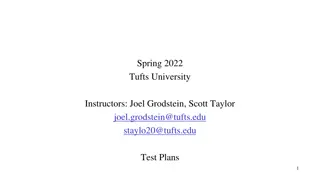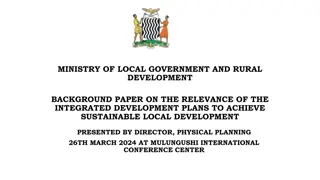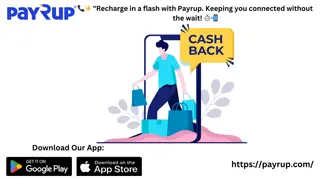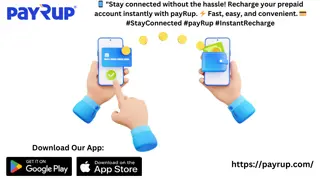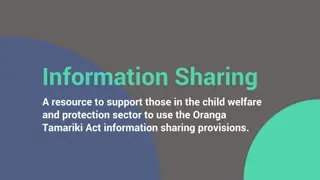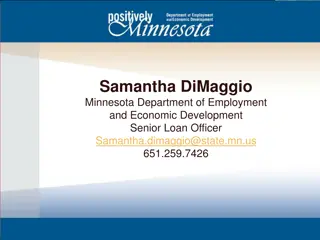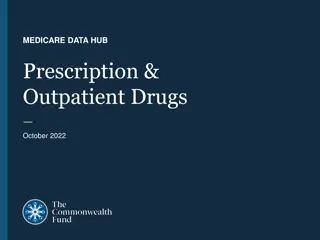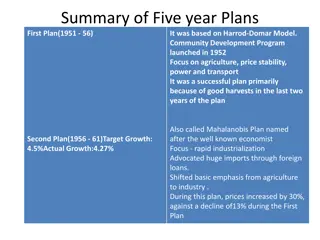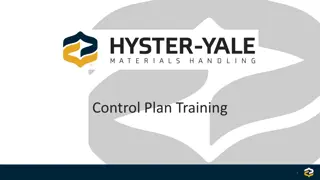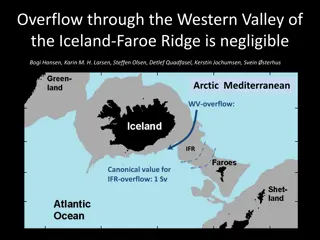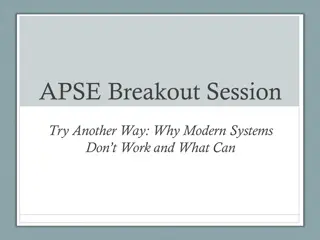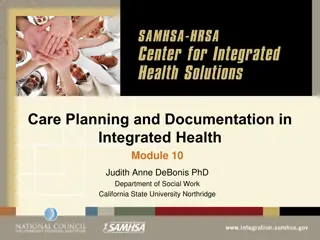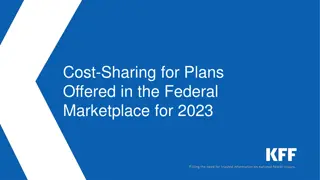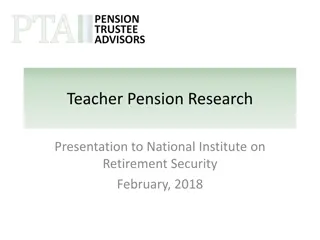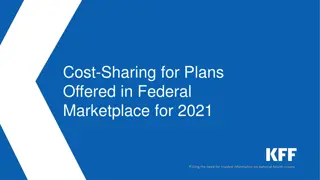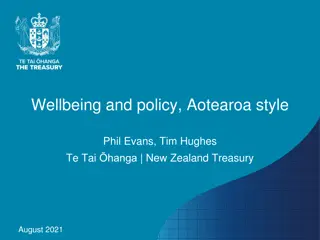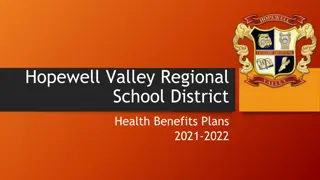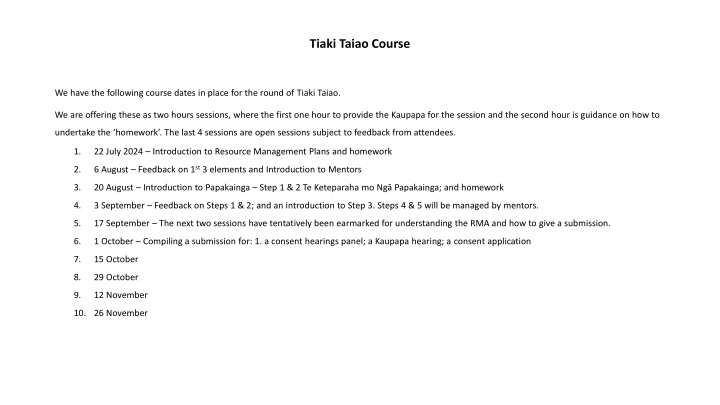
Tiaki Taiao: Resource Management Plans and Beyond
Explore the Tiaki Taiao course offering insights into resource management plans, Iwi & Hapu management plans, and environmental plans like THOROMATANUI Ng Potiki, focusing on influencing decision-making processes for environmental health and community well-being.
Download Presentation

Please find below an Image/Link to download the presentation.
The content on the website is provided AS IS for your information and personal use only. It may not be sold, licensed, or shared on other websites without obtaining consent from the author. If you encounter any issues during the download, it is possible that the publisher has removed the file from their server.
You are allowed to download the files provided on this website for personal or commercial use, subject to the condition that they are used lawfully. All files are the property of their respective owners.
The content on the website is provided AS IS for your information and personal use only. It may not be sold, licensed, or shared on other websites without obtaining consent from the author.
E N D
Presentation Transcript
Tiaki Taiao Course We have the following course dates in place for the round of Tiaki Taiao. We are offering these as two hours sessions, where the first one hour to provide the Kaupapa for the session and the second hour is guidance on how to undertake the homework . The last 4 sessions are open sessions subject to feedback from attendees. 1. 22 July 2024 Introduction to Resource Management Plans and homework 6 August Feedback on 1st3 elements and Introduction to Mentors 2. 3. 20 August Introduction to Papakainga Step 1 & 2 Te Keteparaha mo Ng Papakainga; and homework 4. 3 September Feedback on Steps 1 & 2; and an introduction to Step 3. Steps 4 & 5 will be managed by mentors. 5. 17 September The next two sessions have tentatively been earmarked for understanding the RMA and how to give a submission. 6. 1 October Compiling a submission for: 1. a consent hearings panel; a Kaupapa hearing; a consent application 7. 15 October 8. 29 October 9. 12 November 10. 26 November
Resource Management Plans There are varying perspectives on the function/s of IHMPs. 1. Some iwi and hap consider their main function is to build internal capacity and capability through the articulation of a collective vision of aspirations and objectives for iwi and hap resource management needs. 2. For others, the main purpose of IHMPs is to be integrated into the resource management planning system so as to best influence its decision- making, and these plans, therefore, often state expectations and principles for engagement. In such plans, the cultural elements may be far less pronounced. 3. Other plans have taken a hybrid approach, adopting a planning framework that is based on kaupapa (themes) M ori and presenting it in such a way that facilitates effective cross-cultural communication between tangata whenua and decision-making organisations. Recognising this variety of methodologies helps to explain the diverse range of IHMPs that have been created over the last three decades. Possible limitations of IHMPs 1. Usually, must have the sanction of a recognised Iwi Authority (PSGE and the like), utlising a Mana Whakahono a Rohe agreement 2. The current RMPlan process doesn't take account of M ori Land Blocks. 3. Settlement Legislation is varied some PSGE s are recognized for all purposes of an Iwi and its associated H pu/Marae. Some settlements recognize the autonomy of its hapu and marae separate from the PSGE.
THOROMATANUI Ng Potiki Environmental Plan 2019-1029 1.2 Plan Purpose This environmentally-focused plan builds off the solid foundation set by the Ng Potiki Environmental Plan 2001 and reflects our values, frustrations, aspirations and achievements in relation to our taiao (environment), our people and our takiw wh anui (wider area of interest). In essence, we want this Plan to: influence Council and central government plans, projects, strategies and decisions guide Ng Potiki Resource Management Unit mahi encourage greater collective responsibility for the health of our taiao. While this is an environmentally focused plan, this Plan seeks to improve the social, cultural and economic outcomes for our Ng Potiki people. This environmentally-focused plan builds off the solid foundation set by the Ng Potiki Environmental Plan 2001 and reflects our values, frustrations aspirations and achievements in relation to our taiao (environment), our people and our takiw wh anui (wider area of interest). In essence, we want this Plan to: influence Council and central government plans, projects, strategies and decisions guide Ng Potiki Resource Management Unit mahi encourage greater collective responsibility for the health of our taiao. While this is an environmentally focused plan, this Plan seeks to improve the social, cultural and economic outcomes for our Ng Potiki people.
Te Rautau, Te Rhui Taketake Ng ti Whakaue ki Maketu Hapu Management Plan 2018-2028 Plan purpose This Plan has been developed to voice the collective aspirations for the environment and our people. This Plan: reflects the views and aspirations of wh nau and hap through policy. is outcomes focused and identifies collaborative opportunities. should influence Council plans, processes and decisions as well as our own strategic objectives. We want to influence better outcomes for our environment and people, now and for the future. This Plan has been developed and guided by ng uri o Ng ti Whakaue, by the R nanga and by those who are actively working within resource management. To ensure that this plan has a tangible impact, we have also specified priority projects to carry out over the next 10 years. In many cases there will be opportunities to collaborate with other agencies with these identified projects. This Plan will be lodged with the Bay of Regional Council; Tauranga City Council and Western Bay of Plenty District Council. A copy of this Plan will also be provided to central government agencies such as the Department of Conservation, NZ Transport Agency and Ministry for Primary Industries. 1. Introduction This environmentally-focused hap management plan has been developed by Te R nanga o Ng ti Whakaue ki Maketu. This Plan in no way replaces or alleviates the need for Councils, central government agencies, consultants and consent applicants to engage with Te R nanga o Ng ti Whakaue ki Maketu.
TE KOIKOI KARORO Ng ti Hangarau H pu Management Plan 2021 Te M t puna | Introduction Te Koikoi Karoro is the Hap Management Plan for Ng ti Hangarau. It is an expression of our role and responsibilities as kaitiaki and rangatira over our ancestral lands, waters and taonga. This plan voices our position on the following priority topics of significance within our rohe: Working in partnership Our cultural heritage, practices, and identity Development of wh nau land Our taiao or natural environment These priority topics in action will allow us to: Ensure that land use and development within our rohe occurs in the right place and carried out in the right way Influence better planning and decisions in relation to infrastructure, land use and development within our rohe Be proactive instead of reactive Protect our sites, areas, and landscapes of cultural significance Revitalize our cultural practices Foster effective working relationships
Homework Nine (9) essential elements have been identified for a successful RMP. These are: 1. Description of the iwi, hap , marae, land block you are preparing this for who they are, for example, whakapapa, history. 2. Purpose of the RMP why it was prepared, who it is prepared for and what it is seeking to achieve, for example, environmental, social, cultural and economic goals (see examples) 3. Rohe/Area of Interest being covered by the RMP. 4. Issues the RMP seeks to address for example, stormwater and sewage outfalls; environmental degradation; vegetation clearance; housing. 5. Objective, policies and methods statements identifying what outcomes are being sought by the RMP to address the issues and how this can be achieved; for example, by research; information gathering and monitoring resource consents. 6. Participation the circumstances when the iwi, hap , marae, land block seek consultation with an agency, for example, a council or consent applicant, the process to be used, points of contact, and the information the iwi or hap need to enable it to assess the agency s proposal. 7. Administration of the RMP who is responsible for the RMP, for example, iwi authority; hap authority; marae committee; Land block trustees. 8. Readability the RMP is well structured and easy to understand. 9. Review how and when the RMP will be reviewed. For the next Hui, what I want you to do is complete to the best of your ability (eg. not perfect), the first 3 points. By the next Hui we will also have trained mentors in place to help you with the remaining six elements.

